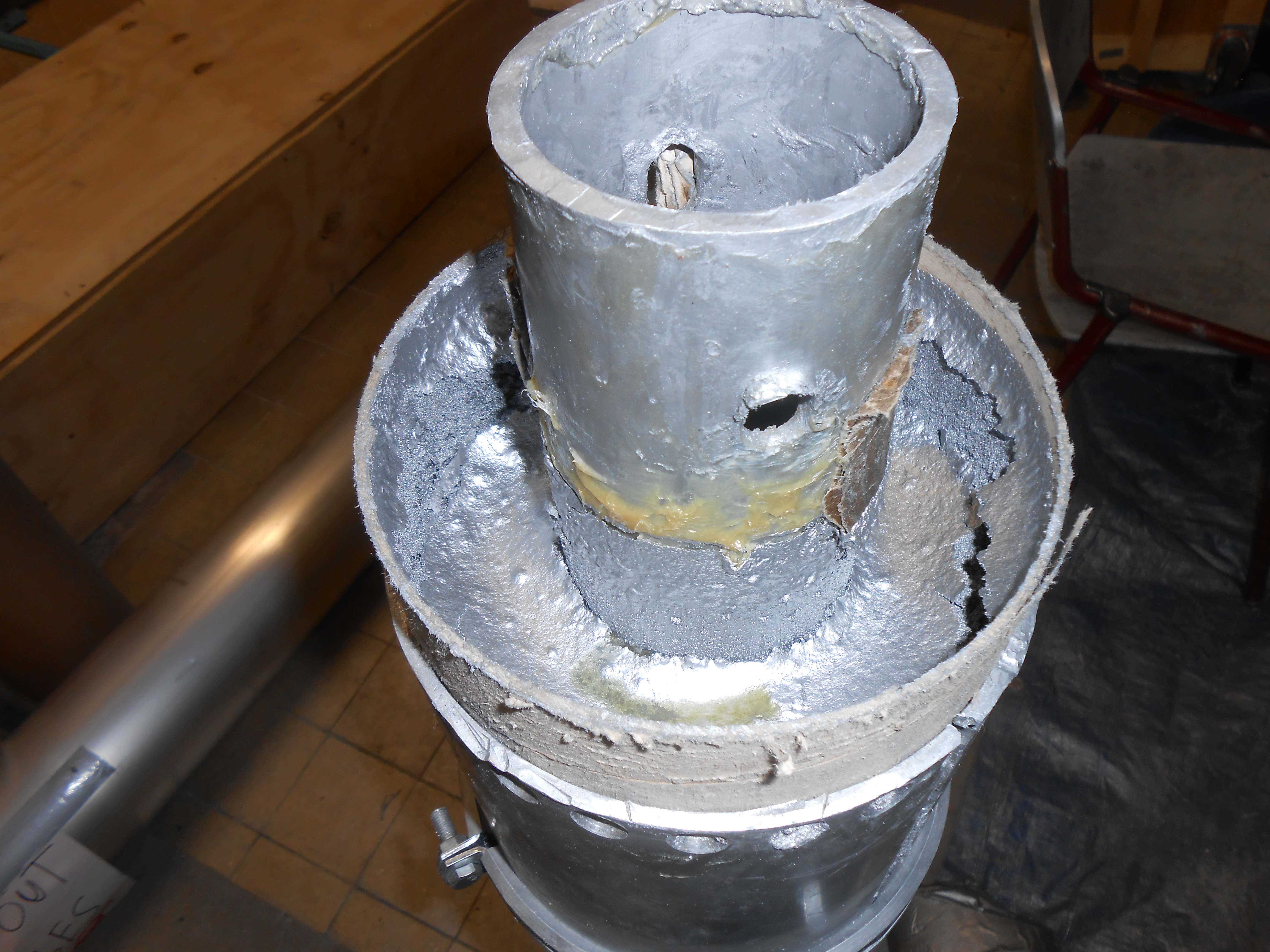
This week the propulsion team produced the grains that will fuel Stratos II in October. The hybrid DHX-200 Aurora motor uses liquid nitrous oxide to oxidise the solid fuel grain in the combustion chamber. The solid fuel grain consist of sorbitol, paraffin and micron sized aluminium powder. A mixture of 80, 10 and 10 percent respectively, results in a fuel that has a high regression rate of approximately 3 mm/s and an approximate specific impulse of 185 [s].
The sorbitol and paraffin are heated and melted in a large pan after which the aluminium powder is added. As soon as the mixture reaches a temperature of 110 degree Celsius, it is ready for casting. The liquified fuel mix is casted into a cardboard liner in which a mandril is placed. The mandril will make sure that the port in the fuel grain has the right dimensions.
After a cooling period of at least 24 hours, the mold and mandril are removed and the grain can be cut to size. Finally the cardboard liner will be coated by a layer of epoxy resin to provide more rigidity and a better fit in the combustion chamber.
Next week the internal quality of the fuel grains will be investigated by means of CT scans. Due to significant shrinkage that the fuel exhibits while cooling down, there is a risk of internal cavities. If these are to large, this will result in uneven regression. After the quality has been confirmed by the CT scan, the combustion chamber can be assembled.
Written by Jeroen Wink, Hybrids Team Member



